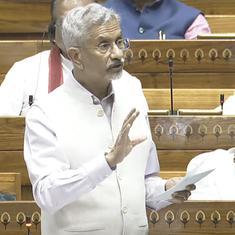When India’s batting clicks, it can be hard to stop. Shafali Verma and Harmanpreet Kaur are among the biggest hitters in the women’s game. Jemimah Rodrigues plays the anchor role to perfection and runs well between wickets and then there is Smriti Mandhana, the one who brings it all together.
The left-handed opener is the sword and the shield of this Indian batting order. More than anyone else in the batting line-up, she holds the key to India’s showing at the upcoming T20 World Cup. But her role is anything but easy for it calls upon her to do a little bit of everything. While Verma and Kaur have the license to thrill and Rodrigues is trusted to play a certain role, Mandhana needs to do it all.
When Verma and Kaur are in the middle, she needs to feed them the strike. While batting with Rodrigues, she needs to be the aggressor. And she needs to do all this without losing her own personal rhythm. As important as the other batters are, there is no doubt that the Mandhana is the standout; she is the reason why Australia fear this Indian batting line-up and more often than not, she sets the tone of the innings.
“There’s no doubt their strength is the batting. They’ve got four world-class batters and when I say world-class I mean top of the tree guns. They will always be a threat,” Australia’s head coach Matthew Mott told ESPNcricinfo. “Their bowling, their plans have worked quite well over the years but I think that’s their biggest area for growth. They probably need to produce some more fast bowlers. In a T20 they would be the most feared batting line-up - ours is pretty feared but with them you know that if you take a wicket another good player just keeps rolling out.”
As we saw in the tri-series against England and Australia, this Indian unit is competitive against the best in the business. But at the same time, we also saw a batting unit that can collapse with little notice. The lack of a dependable middle-order means the top order has to do all the heavy lifting and that is, once again, where Mandhana becomes crucial.
“The best way to support the middle order is for the top order to bat 20 overs. I think we need to try and bat long as a top four. We must try not to get out in the 16th or 17th over and the problem will be sorted if we can stay until the 20th over,” said Mandhana on Saturday.
Mandhana’s words show how the Indian top order is already feeling the pressure. They know it’s either boom or bust – there is no middle ground. One might argue that asking the top order to bat till the 20th over in a Twenty20 match is a tall order, but it is what India needs. The scoring rate while the top four are in the middle is never an issue but to do that while not losing wickets may be a tall task.
Indeed, one must wonder whether being the player who everyone else can bat around will weigh Mandhana down. So much of India’s batting effort depends on the 23-year-old that her own game could suffer the backlash. Should she be left to play her own game?
This is not an easy question to answer because, frankly, India doesn’t have anyone else who can do what Mandhana does.
On her own, Mandhana has one of the sweetest bat swings in the women’s game. While Verma and Kaur can often look ungainly while trying to hit the big shots, the left-handed opener can make batting look easy. She hits the ball with seemingly little effort and gets maximum reward for the risk she takes.
With 621 runs in 19 matches, Mandhana is also the highest run-scorer in the shortest format since the last T20 World Cup. She has scored these runs at a strike-rate of 128.57.
Her scores during the tri-series — 15, 35, 45, 55, 66 — show that she is in the middle of a pretty decent run of form. One must take note of the fact that these scores have come against two of the best teams in the world. But still, she will need to go one better for India to win it all.
That one wants more for her is a grim acknowledgment of India’s inconsistencies but at the same time, it is a testament to her talent too. One can only ask for more from someone if you know they’ve got more to give — and clearly, in Mandhana’s case, she does.
Both the Indian team and opponents know that as long as Mandhana is at the crease, anything is possible. This will make her an obvious target and could expose the biggest chink in India’s plan to win their first ICC trophy.
The big question, though, is about the kind of impact that this may have on her own individual game and how that might impact India during the tournament. But given how the 23-year-old has blossomed with the added responsibility over the last few years, there is every reason to believe that she will be able to attack as well as defend as the situation demands.










